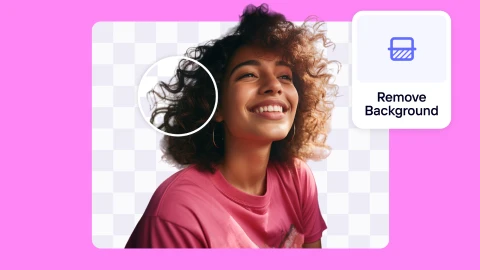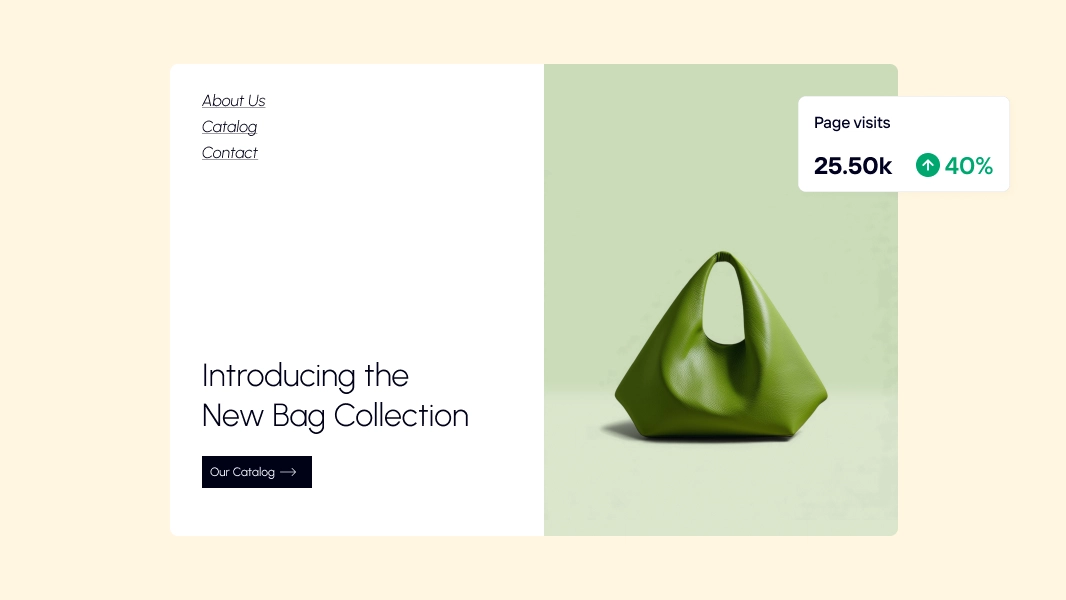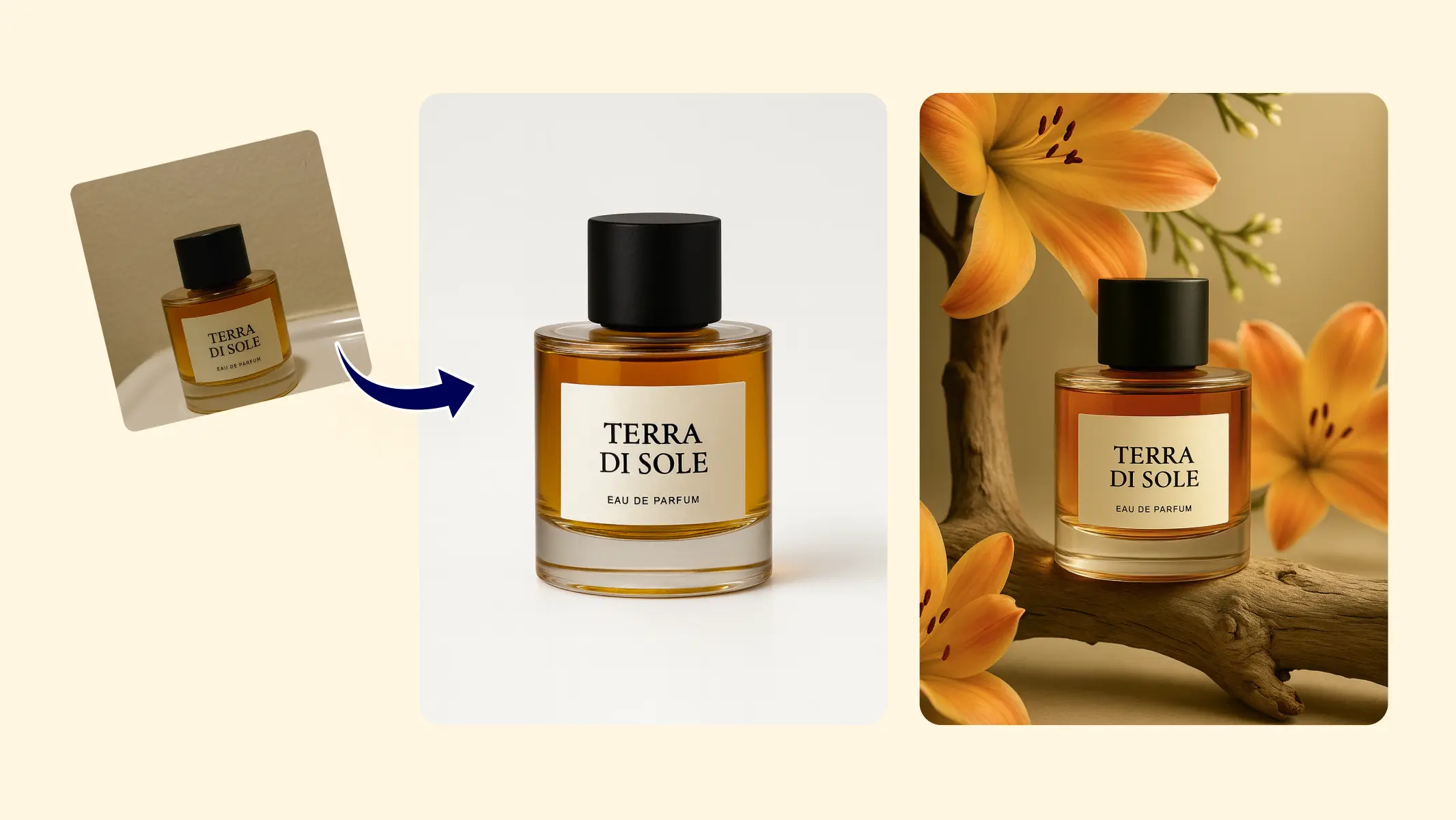Photoroom vs Pixelcut: which tool creates better visuals for your store?
As a solo e-commerce seller launching dozens of new products each month that require at least four to five listing photos for Amazon, Instagram content, and ad creatives for Facebook, you need a photo editing tool to boost productivity and creativity. But which tool makes it easier and saves you hours, not just minutes?
In this article, I will be comparing two AI-powered photo editors: Photoroom and Pixelcut. This comparison will focus on how they help e-commerce operations. Both Photoroom and Pixelcut can remove backgrounds, both use AI, and both promise to make your life easier. Both are powerful, but which one fits your business model?
I will compare both tools across categories such as workflow efficiency, mobile usage, pricing, brand consistency, and much more.
Photoroom vs. Pixelcut comparison
Before we go into the details, here is a helicopter view of what we're comparing here.
Photoroom: an AI photo editor for e-commerce

Photoroom is the go-to photography and AI photo editing solution for product sellers and e-commerce businesses. Think of us as your product photography department that never sleeps.
Target user: Solo e-commerce sellers, DTC brand owners, marketplace sellers
Primary goal: Convert product photos into sales-ready assets quickly and consistently
Core strength: Quick AI product photography and marketplace compliance
Pixelcut: an AI creative content studio

Pixelcut positions itself as the ultimate creative toolkit for content creators and visual storytellers. Think of it as having a professional design studio in your pocket.
Target user: Content creators, social media managers, creative professionals
Primary goal: Create visually striking content that stands out and engages
Core strength: Artistic AI tools and creative flexibility
Category | Photoroom | Pixelcut |
Target user | e-commerce sellers, marketplace vendors | Content creators, social media managers |
Volume processing | Batch editing up to 50 images | Individual workflow, limited batch |
Business features | Team collaboration, brand kits, marketplace templates | Individual creator tools, community templates |
AI specialization | Product photography, virtual models, product staging | Character generation, anime creation, video AI |
Pricing | Free plan available Pro: $12.99/month or $90/year Max: $34.99/month or $251,88/year Ultra: from $99/month or $990/year | Free plan available Pro: $10/month or $96/year Pro+: $30/month or $288/year Max: $60/month or $576/ year |
Batch processing and workflow efficiency
If you're processing images for multiple products regularly, batch editing is essential for scaling your business.
How Photoroom handles volume
Photoroom’s Batch Editor helps you apply the same image editing settings across multiple products at once. It's efficient and guarantees consistency across your product lines.
Use it to take 50 product photos from raw shots to Amazon-ready listings in minutes. Here's what this looks like in practice:
Upload 50 product photos of your new jewelry line
Apply the same background removal to all of them
Add consistent white backgrounds for Amazon listings
Apply the same lighting and shadow settings across the entire batch
Export everything in marketplace-ready formats
How Pixelcut handles volume
Pixelcut takes a different approach. It's designed more for individual image creativity. You'll work on one photo at a time, but you get more creative control. Its AI tools are fantastic for making each image unique and eye-catching.
Recent updates have added some batch capabilities for AI backgrounds, but it's still fundamentally designed around the one-image-at-a-time workflow.
Best in this category: Photoroom
If you're photographing new inventory regularly or scaling beyond just a few products, Photoroom's batch capabilities will save you hours every week. Some Photoroom customers report saving up to 10 hours a week, leaving more time to source new products, customer service, and grow your business.
AI-powered features
Both Photoroom and Pixelcut use artificial intelligence, but the features are built for completely different users and goals.
Photoroom’s product photos-focused AI
Product Staging with AI: You can create realistic product scenes and lifestyle photos that put your product in action using AI. Imagine taking a basic photo of your skincare product and instantly placing it in a luxurious spa setting, or showing your coffee mug in a cozy morning kitchen scene.
Virtual Model tool: You can create realistic product images with virtual models wearing or using your products. No model fees, no photoshoot coordination, no scheduling nightmares. Upload your clothing item, and the AI generates professional product shots with diverse virtual models.
Generating product packaging: If you need professional packaging mockups, Photoroom's AI can generate realistic product packaging designs and 3D mockups that show your products in retail-ready packaging.
Realistic AI backgrounds: Photoroom offers AI-generated backgrounds across every product category imaginable, from kitchen counters for food products to marble surfaces for jewelry, outdoor settings for sports gear, and luxury spa environments for beauty products.
Other AI tools designed around e-commerce include Remove Background, AI Upscale, AI Resize, and much more.
Pixelcut's designer-focused AI
Pixelcut also has AI capabilities, but its tools are not built for e-commerce. It has AI anime generators, AI face generators, AI character generators, and AI wallpaper generators.
AI design models: Pixelcut integrates models like Flux Ultra, Flux Pro, Imagen 3, and Ideogram. These are fantastic for creative work, artistic content, and unique visual concepts.
AI Character and Anime generation: Dedicated AI character generators and anime creation tools can help you generate entirely new characters, modify existing ones, and create artistic interpretations. Perfect for content creators, game designers, and brands wanting unique mascots or creative campaign elements.
AI Video Generator: You can create high-quality videos from single prompts or images, describe your scene, and get professional-looking video content in minutes.
Text-to-Video AI: Pixelcut allows you to generate videos directly from text descriptions. This is great for social media managers and content creators who need to produce video content quickly without traditional video production workflows.
I tested both tools with the same challenge: to create a staged lifestyle picture of a bag in an office setting, for a handbag. For Photoroom, I used the AI Product Staging tool, so I uploaded the original picture of the bag, and it generated a lifestyle shot, no prompt needed.
Pixelcut doesn’t have a similar tool, so I used their background generator to give it a shot, and these are the results:

Best in this category: Photoroom
Photoroom's AI tools solve major e-commerce pain points, especially around costs. Its AI understands that you need tools that convert browsers into buyers, not just create beautiful art.
Template library and marketplace readiness
Every marketplace has different requirements, and your tools should understand these nuances without you having to research and memorize platform specifications. Amazon wants white backgrounds and specific dimensions. Etsy customers expect lifestyle shots. Instagram needs square formats. The right tool makes compliance automatic, not a manual chore.
Photoroom's product photography intelligence
The templates on the Photoroom mobile and web app are built specifically around one core principle: making your product the star of every image, even when text and design elements are involved.
Here's what makes Photoroom's template system great for e-commerce:
One-tap product replacement: Every template has a designated product zone that's perfectly positioned and sized. When you select any template, you simply hit "replace," and your product photo automatically fits into the optimal spot. No manual resizing, no worrying about text overlap, no guessing where your product should sit in the composition.
Product-first design philosophy: Unlike generic design templates that treat products as afterthoughts, Photoroom's templates are engineered so your product remains the focal point. It strategically places elements, backgrounds, and decorative features to complement your product, not compete with it for attention.
Built-in promotional elements: There are pre-designed promotional elements to help you announce things like new arrivals, sales, and discounts. Your product automatically integrates with these promotional graphics, so creating discount announcements and new product launches is as simple as selecting the right template and replacing the product image.
Marketplace-specific optimization: Templates are designed for different marketplace platforms, including eBay, Shopify, Vinted, and more. This means you can take a square photo and automatically resize it to fit any marketplace dimension while maintaining professional composition.
Seasonal and thematic variety: The template library includes options for different shopping seasons or holidays like Valentine’s Day, Mother’s Day, etc. They are also themed around different product categories like skincare, food, shoes, interior, wedding products, etc. These themes are constantly being refreshed, as well.

Pixelcut's creative template approach
Pixelcut offers thousands of templates that prioritize visual impact and creative expression. It focuses on artistic flexibility and community-driven creativity rather than systematic product placement.
Community-generated variety: Pixelcut's template library includes thousands of user-created designs, giving you access to trending styles and creative concepts that popular creators develop. You can find templates that match current social media trends and visual aesthetics that engage audiences.
Artistic flexibility: When you select a Pixelcut template, you get complete control over how you adapt your product to fit the creative vision. You can resize, reposition, and modify elements to create unique compositions, but you might need some design knowledge to do that fully.
Social media optimization: Pixelcut designs templates specifically for platforms like Instagram Stories, TikTok, and Pinterest. They focus on engagement metrics and viral potential rather than marketplace compliance, making them excellent for brand awareness campaigns and social media marketing.
Creative experimentation: The platform encourages you to experiment with different artistic styles, effects, and compositions. You can blend multiple templates, customize elements extensively, and create unique visual concepts that reflect your brand's creative personality.
Trend-responsive updates: Pixelcut also regularly updates its template library with trending styles on social media, seasonal aesthetics, and popular design movements. This keeps your content fresh and aligned with current visual trends that resonate with social media audiences.
The key difference is that with Pixelcut, you adapt your product to fit the template's creative vision and experiment with artistic positioning. With Photoroom, the template automatically showcases your product in the most effective way possible.
I tested both platforms with a simple challenge: prepare the same product for an Etsy listing. With Photoroom, I selected a Minimal Shop template, uploaded the product photo, and resized it to Etsy square.
With Pixelcut, I had access to amazing creative templates that would stand out on Instagram. But getting Etsy-compliant images required more manual work (removing backgrounds, ensuring white backgrounds met marketplace standards, checking dimensions).

Best in this category: Photoroom
Since you're selling across multiple platforms and need to ensure compliance while maintaining brand consistency, Photoroom understands the assignment.
Brand consistency features
Your brand needs to look cohesive across 50+ products and multiple platforms. Customers should be able to recognize your style whether they're browsing your Amazon store, Instagram feed, or Shopify site. The tools you choose either help maintain this consistency or force you to manually recreate it every single time.
Photoroom's brand system approach
Photoroom's Brand kit helps you create a consistent visual identity across product lines and platforms.
Centralized brand management: Store your logos, colors, fonts, and styling preferences in one centralized location. Every time you edit photos, your brand elements are instantly accessible. This eliminates the constant back-and-forth of finding the right logo file or remembering your exact brand colors.
Product line consistency: Create professional and cohesive product catalogs by applying the same background treatments, lighting settings, and shadow styles across all your product images on your website or marketplaces.
Template consistency: You can save your editing workflows as reusable templates. Once you nail the perfect Amazon listing format or Instagram post style, you can apply those exact settings to new products with one click.
Brand asset synchronization: When you update your brand kit (new logo, seasonal color scheme, updated fonts), Photoroom automatically syncs these changes across all your templates and saved presets. You avoid the nightmare of manually updating dozens of templates when your brand evolves.
Quality control: Photoroom's brand kit enforces brand consistency even if team members have different skill levels. Think of it as a virtual assistant that can create brand-compliant product photos without needing detailed design knowledge because the system guides it toward your visual standards.
Pixelcut's collection-based organization approach
Pixelcut takes a different approach to managing brand consistency. Instead of a formal brand management system, it provides organizational tools that help you maintain visual cohesion through project management and design collections.
Design collections: You can create collections to organize your designs by theme, product line, or campaign. This helps you group related visuals together and maintain some consistency across similar products. While not as systematic as a brand kit, collections let you reference previous designs for cohesive visuals.
Manual brand consistency: You maintain brand consistency by manually applying the same design elements, colors, and styling choices across your projects. This requires more discipline and memory, but gives you complete creative control over how you interpret and apply your brand elements.
Template favoriting and reuse: You can favorite templates that work well for your brand and reuse them across different projects. This creates some consistency by returning to successful design approaches, though you'll need to manually ensure brand elements like colors and fonts remain consistent.
Project-based brand application: You apply brand elements project by project, giving you the flexibility to adapt your brand presentation based on specific campaigns, seasons, or creative concepts. This approach works better if you prioritize creative variety over strict consistency.
Best in this category: Photoroom
If you need reliable brand consistency across multiple products and platforms for your e-commerce business, Photoroom's dedicated brand management system eliminates guesswork and manual work. Pixelcut's collection-based approach is better if you prefer flexible brand interpretation, but it requires significantly more manual effort to maintain the systematic consistency that builds customer recognition and trust.
Mobile-first workflow
Mobile editing is a crucial category because you're often editing photos while responding to customer messages or during any spare moment between business tasks. It's essential for maintaining business momentum when you're not at your desktop.
Photoroom's mobile business focus
Complete feature parity: Photoroom delivers full desktop functionality on mobile. Everything you can do on a desktop, including batch editing, brand kit access, and marketplace templates, all work seamlessly on mobile.
Efficient interface: The touch controls on the mobile screen are designed for both efficiency and creativity. You have quick access to the most common product photo editing tasks like background removal, batch creation, and marketplace resizing.
Workflow continuity: Your Photoroom design projects sync seamlessly across devices. This means you can start editing on your desktop, leave your workspace, and continue editing on your mobile while you're out. Or start on your mobile and finish at your desktop. Your workflow will not get broken.
Mobile batch processing: A lot of AI photo editors struggle with batch editing on mobile phones. With Photoroom’s interface, you can upload multiple photos from your phone's camera roll and process them all at once, even while mobile. This is huge if you photograph inventory on the go.
Pixelcut's native mobile experience
Pixelcut is mobile-first and excels at creative touch-based workflows. Touch interactions feel natural and responsive, perfect for creative experimentation and artistic editing. Its AI tools also work beautifully on mobile, making it easy to create stunning visuals anywhere.
You can seamlessly share to social platforms directly from the mobile app, which is great for content creators and social media managers. However, I found Photoroom’s interface more user-friendly. Here is an image showing both mobile designs:

Best in this category: Tie
Both tools excel on mobile but serve different needs. Pixelcut wins for creative flexibility and artistic control on mobile. Photoroom wins for business efficiency and workflow continuity across devices. Choose based on whether you prioritize creative freedom or business productivity during mobile editing sessions.
Pricing and business scalability
Your editing tool costs need to make sense as your business grows. Starting with 10 products and scaling to 100+ requires pricing that aligns with business volume, not creative project counts.
Photoroom's business-focused pricing
Photoroom structures pricing around business needs and volume requirements with clear, predictable costs. Photoroom offers a free trial to all users. The following prices apply after the trial period:
| Plan | Cost |
|---|---|
| Pro | $7.50 per month/billed annually $12.99 per month /billed monthly |
| Max | $20.99 per month/billed annually $34.99 per month/billed monthly |
| Ultra | From $82.50 per month/billed annually From $99 per month/billed monthly |
| Enterprise | Contact the sales team. |
You can find more information about what each plan includes on the dedicated pricing page.
Pixelcut's creator-focused pricing
Pixelcut offers multiple pricing tiers based on GPU credits and advanced AI model access. GPU credits are consumed when using advanced AI models from third-party partners. Basic editing doesn't require GPU credits, but the newest AI generation features do. This means your actual costs can vary significantly based on which features you use.
Free plan: Basic access to core editing tools like background removal and magic eraser. Limited usage and includes watermarks. Good for testing the platform.
Pro plan ($10 monthly or $96/year): Includes unlimited access to all AI tools, batch editing capabilities, a commercial license, and 600 credits per month.
Pro+ plan ($30/month or $288 yearly): Everything in Pro plus additional 3000 GPU credits for advanced AI models from third-party partners like Flux, Imagen, and other AI image generation tools. Better for users needing access to the latest AI models.
Max plan ($60/month or $576 per year): 9000 GPU credits allocation for heavy users of advanced AI models, unlimited access to all premium features, and priority processing for the most demanding creative workflows.
Best in this category: Photoroom
Photoroom's pricing structure scales with your business rather than penalizing volume processing. If you're planning to grow your product catalogs, the predictable monthly cost and comprehensive business features provide significantly better long-term value than credit-based systems.
Team collaboration and asset management
Even solo sellers eventually need virtual assistants, team members, or freelancers to help with product photography and content creation. The right tool should help you facilitate team workflows, not create bottlenecks around content creation.
Photoroom's business team features
Photoroom's Teams plan makes collaboration easier for your growing business.
Role-based team management: You can invite team members with defined roles and permissions that match their responsibilities. Virtual assistants can edit product photos without accessing your entire business account, freelancers can work on specific projects with limited access, and team leads can oversee quality control with full administrative privileges.
Centralized brand asset sharing: Your entire team accesses the same brand kit, templates, and workflows automatically. You eliminate the constant back-and-forth of sending brand guidelines, sharing logo files, or explaining style preferences. New team members immediately work with your established brand standards.
Template and preset standardization: You can create templates and presets that ensure anyone on your team produces brand-consistent results, regardless of their design experience.
Shared project organization: You can assign specific products or campaigns to team members while maintaining oversight of overall progress and quality.
Real-time collaboration: Team members can work on projects simultaneously, share feedback, and coordinate campaigns in real-time. This speeds up content production cycles and reduces the delays caused by sequential workflows.
As your business grows, you can easily add new team members who can immediately access established processes and maintain quality standards. The system scales with your business needs without requiring complete workflow restructuring.
Pixelcut's individual creator's focus
Pixelcut has limited team collaboration features. It has exceptional tools for solo creators who want complete creative control over their work. However, it has a less systematic approach to organizing and sharing brand assets across team members. It's better suited for businesses where one person handles all creative work or coordinates with external designers.
If you need to work with team members, freelancers, or virtual assistants, you can invite them via email to your account to make edits, but Pixelcut doesn't provide built-in collaboration features, so you handle team coordination outside the platform.
As your business grows and requires multiple people to handle visual content, Pixelcut's individual-focused approach becomes a limitation. You can't easily onboard team members, share brand standards, or maintain quality control through the platform itself.
Best in this category: Photoroom
As you scale beyond a solo operation, Photoroom Teams can help you prevent workflow bottlenecks and maintain consistent quality standards as your business grows.
When to use Photoroom, Pixelcut, both, or neither
Use case scenario | Photoroom | Pixelcut |
Creating product listings for Amazon, eBay, Etsy | ✅ Excellent - Marketplace-specific templates, batch processing, automatic compliance with platform requirements, white background automation | ❌ Limited - Requires manual formatting for each platform, no marketplace-specific optimization, time-intensive for multiple listings |
Building a consistent brand across 50+ products | ✅ Excellent - Brand kit ensures systematic consistency, batch applies brand elements, maintains visual cohesion automatically | ❌ Poor - Manual brand application per image, no centralized brand management, difficult to maintain consistency at scale |
Solo seller with 10-20 products | ✅ Excellent - Efficient for quick processing, professional results | ✅ Good - Creative flexibility works well for small-scale operations, individual attention per product |
Artistic campaigns | ⚠ Moderate - Can create professional campaigns but limited creative variety, templates may feel restrictive for artistic vision | ✅ Excellent - Creative experimentation, artistic flexibility, unique visual storytelling capabilities |
Team of 5+ people creating content | ✅ Excellent - Built-in collaboration features, role-based permissions, shared brand assets, quality control workflows | ❌ Poor - No team features, manual coordination required, difficult to maintain standards across team members |
Processing 100+ images weekly | ✅ Excellent - Batch processing, template automation, systematic workflows designed for volume | ❌ Poor - Individual image workflow, time-intensive at high volumes, no bulk processing capabilities |
Marketplace seller needing promotional graphics | ✅ Excellent - Built-in promotional elements, sale badges, discount graphics, seasonal campaign templates | ⚠ Moderate - Creative promotional options available but requires manual creation, no preset promotional elements |
Dropshipping with supplier photos | ✅ Excellent - Background removal, staging tools, virtual models help differentiate from other sellers using same supplier images | ⚠ Moderate - Creative tools can help differentiate but require more manual work, less efficient for multiple similar products |
Seasonal campaign across multiple channels | ✅ Excellent - Batch seasonal updates, multi-platform formatting, systematic campaign deployment | ⚠ Moderate - Creative seasonal content possible but requires manual adaptation for different channels |
Creating product videos and animations | ❌ No support - Static image editor only, no video capabilities | ✅ Good - AI video generation, text-to-video capabilities, dynamic content creation |
Budget-conscious startup (under $50/month) | ✅ Good - Lower-cost Pro plan, free plan with more creative tools | ⚠ Moderate - Free plan available but limited, Pro plan may strain startup budgets |
Scaling from 50 to 500+ products | ✅ Excellent - Automation and batch processing essential at this scale, team features support growth | ❌ Inadequate - Individual workflow becomes bottleneck, no scaling infrastructure |
How to decide which tool is best for you?
The best tool for you is the one that fits your business model and your main use cases, i.e., what do you do and what do you need it for?
Choose Photoroom if you:
Process 10+ product images regularly
Sell on Amazon, Etsy, Shopify, or eBay
Need consistent, marketplace-ready results
Plan to scale your product line
Work with team members or VAs (or plan to in the future)
Prioritize time efficiency over creative variety
Choose Pixelcut if you:
Focus heavily on social media marketing
Create unique, artistic promotional content
Work mostly solo on creative projects
Prioritize creative variety over consistency
Have occasional editing needs



Design your next great image
Whether you're selling, promoting, or posting, bring your idea to life with a design that stands out.

















